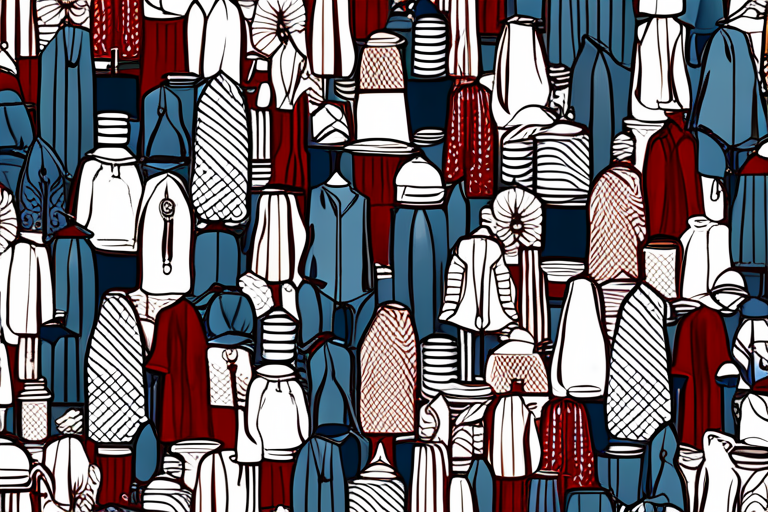Introduction
The fabric cover factor is an important metric to determine the amount of fabric needed to cover a given area. To calculate the fabric cover factor, you need to know the dimensions of the area to be covered and the repeat of the fabric.
The repeat is the distance between the identical points on the fabric. Once you have these two pieces of information, you can calculate the fabric cover factor by dividing the repeat by the area.
For example, if you are trying to determine how much fabric you need to cover a sofa, you would need to know the dimensions of the sofa and the repeat of the fabric. Once you have those two pieces of information, you can calculate the fabric cover factor by dividing the repeat by the area.
If the sofa is 6 feet wide and 8 feet long, and the fabric has a repeat of 12 inches, then the fabric cover factor would be 6 (feet) divided by 12 (inches), which equals 0.5. This means that you would need 0.5 yards of fabric for every 1 square foot of surface area.
Now that you know how to calculate the fabric cover factor, let’s take a look at what you can do with the results.
How to calculate the fabric cover factor
The fabric cover factor is a metric to determine the amount of fabric needed to cover a given area. To calculate the fabric cover factor, you need to know the dimensions of the area to be covered and the repeat of the fabric. The repeat is the distance between the identical points on the fabric. Once you have these two pieces of information, you can calculate the fabric cover factor by dividing the repeat by the area.
For example, let’s say you are trying to find the fabric cover factor for a piece of fabric that has a repeat of 12 inches and an area of 108 square inches. To calculate the fabric cover factor, you would divide 12 by 108. This would give you a result of 0.11. This means that for every square inch of area, you would need 0.11 inches of fabric.
Now that you know how to calculate the fabric cover factor, what can you do with the results? There are a few different things you can do. First, you can use the fabric cover factor to figure out how much fabric you need to purchase. Second, you can use it to determine whether or not a particular piece of fabric will work for your project. And third, you can use it to estimate how much waste there will be when cutting out your project pieces.
When using the fabric cover factor to figure out how much fabric you need to purchase, it is important to keep in mind that you will need extra fabric for seams, hems, and other details. A good rule of thumb is to add 10-20% extra to your total yardage. For example, if your project requires 10 yards of fabric, you would purchase 11-12 yards to account for seams and other details.
The fabric cover factor can also be used to determine whether or not a particular piece of fabric will work for your project. To do this, simply compare the dimensions of your project area to the repeat of the fabric. If the project area is larger than the repeat, then the fabric will not work. Likewise, if the project area is smaller than the repeat, then the fabric will not work. In both cases, you would need to find a different piece of fabric.
Finally, you can use the fabric cover factor to estimate how much waste there will be when cutting out your project pieces. To do this, simply multiply the width of your project area by the height of your project area. Then, multiply that number by the waste factor (usually 2-5%). This will give you an estimate of how much waste there will be when cutting out your project pieces.
Keep in mind that the fabric cover factor is just one tool that can be used to estimate fabric needs and calculate waste. It is not an exact science, and there are always variables that can affect the results. However, it is a good starting point and can be very helpful when planning a sewing project.
What to do with the results
You can use the fabric cover factor to determine how much fabric you need to purchase. To do this, simply multiply the fabric cover factor by the area of the project. This will give you the amount of fabric needed in yards.
The fabric cover factor can also be used to estimate the amount of waste that will be generated during the project. To do this, simply multiply the fabric cover factor by the waste factor. The waste factor is the percentage of waste that is typically generated during a project. For example, if the waste factor is 10%, then you would multiply the fabric cover factor by 1.1 to get the estimated amount of waste.
In some cases, the fabric cover factor can be used to calculate the amount of fabric needed for a custom project. To do this, you would need to know the dimensions of the project and the repeat of the fabric. Once you have these two pieces of information, you can calculate the fabric cover factor by dividing the repeat by the area.
Conclusion
You can use the fabric cover factor to determine how much fabric you need for a given project. If you know the dimensions of the area to be covered and the repeat of the fabric, you can calculate the fabric cover factor and use that to figure out how much fabric you need.



Pingback: The Importance of Color in Fashion Design - BlainesApparel.com